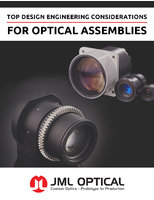Titanium Manufacturing Issues to be explored at conference.
Press Release Summary:
TITANIUM 2011, which will be held in San Diego, CA from October 2-5, will feature machining panel speakers addressing whether or not manufacturing technology will keep pace with projected demand, ability of OEM and contract vendors to boost productivity, and inherent challenges of machining titanium as impediment to it achieving wider acceptance in higher-volume applications. ITA members and non-members are invited to register for this upcoming event.
Original Press Release:
High Performance Machining at Titanium 2011
DENVER -- As the global titanium industry anticipates higher near-term metal consumption by major customers, especially those in the aerospace sector, the situation raises fundamental questions: can manufacturing technology keep pace with the projected higher demand? Will original equipment manufacturers and their contract vendors be able to boost productivity rates to mill, cut, drill, shape and weld titanium in order to satisfy their market requirements? Or will the inherent challenges of machining titanium prevent the metal from achieving wider acceptance in higher-volume applications?
Answers to these important questions will be offered by machining panel speakers at TITANIUM 2011, the 27th annual international conference and exhibition, which will be held Oct. 2-5 at the Sheraton San Diego Hotel and Marina, 1380 Harbor Island Drive, San Diego.
"Metal removal rates have not increased significantly for titanium machining over the years as it has for aluminum machining," Thomas J. Long, engineering manager/indexable milling for Kennametal Inc., Latrobe, PA, stated. "The primary reason for this is the low thermal conductivity of titanium, which causes higher temperatures at the cutting edge/work piece interface."
Long, who will present a paper on "High-Performance Machining of Titanium--the Systems Approach," explained that as cutting temperatures increase, the strength of carbide tools decreases, which in turn limits the cutting speeds for machining titanium. "Titanium is a high-strength material with a very low modulus of elasticity, which is susceptible to vibrations that increase wear on cutting edges, spindle connections and bearings," he said. By combining proper thermal management and improved dynamic stiffness, he said it's possible to significantly reduce metal-cutting temperatures and mechanical vibrations, thereby improving tool life, metal-removal rates and part quality when machining titanium.
Anil Srivastava, Ph.D., manager, manufacturing technology at TechSolve Inc., Cincinnati, another panel speaker, noted that turning and drilling are the major machining operations in manufacturing gas turbine engines, while end-milling and drilling are the most important techniques in airframe manufacturing. His paper is titled: "High-Speed Turning of Titanium (Ti-6Al-4V) Alloy."
"Innovation turns into increased productivity," Srivastava said. "Research in this field shows that enhanced production rates can be achieved with conventional machining methods if the unique characteristics of titanium and its alloys are taken into consideration."
Srivastava said companies such as Lockheed Martin Aero, Pratt and Whitney, Rolls Royce, and GE Aviation are investing in new production capabilities to minimize machining cost. Machine-tool manufacturers are developing units with ultra-rigid platforms that possess exceptional power and torque characteristics, which can withstand the heaviest cutting forces while minimizing chatter. Srivastava also noted that initial test results show selective nano-layered coated inserts and super-finished cutting-edge prep inserts may significantly enhance the life of cutting tools.
"Machine Tool Design for Titanium Machining," a presentation by Dr. Bernhard Bringmann of the StarragHeckert Group, Switzerland, will explore optimal machine specifications to suit the needs of titanium, citing developments in superior cutting processes. His colleague at StarragHeckert, Thomas Neuhold, will review "Best Practices in Titanium Machining," which will focus on designing a comprehensive process strategy for producing titanium parts. Neuhold will discuss how to combine modern analytical tools and hands-on experience to balance cutting performance and tool cost.
"High Performance Metal Cutting," a presentation by Peter Uttenthaler of CERATIZIT Austria GmbH, will examine a new coating concept based on the use of titanium diboride (TiB2) to enhance metal-cutting tools. "Economic Tooling For High Performance Machining Of Titanium Alloys," a paper by Edward Tarney of Erasteel, a division of Eramet SA, Paris, will compare the machining efficiency and chip-removal rates of ultra clean, powdered metal high-speed steel end mills with reference tools made from cemented carbide.
Dr. Roland Holscher of the Institute of Production Management, Technology and Machine Tools (PTW), will discuss ways to manage the heat generated in the high-speed cutting (HSC) of titanium alloys. Holscher's paper will describe a way to "artificially create the HSC-effect by means of dual machining." A paper by Frank Gorsler of TechSolve ("A Screening Test For Cutting Fluids When Milling Titanium") will examine improved cutting fluids that minimize the effect of tooth entry (impact) and provide an extended time in the cut in order to extend tool life.
Members and Non Members of the Association are invited to register for the upcoming event. A limited number of Free Expo Passes are available to walk the exhibition floor Monday, Tuesday, and Wednesday during restricted hours.
The International Titanium Association (ITA) is the host and sponsor of TITANIUM 2011, which is designed to suit the needs of titanium producers, suppliers, customers and stakeholders. Jennifer Simpson is the executive director of the ITA (Web site www.titanium.org). Call (303) 404-2221 for more information or Email conference@titanium.org. Pre-Registration Deadline for the upcoming event is August 31st.




